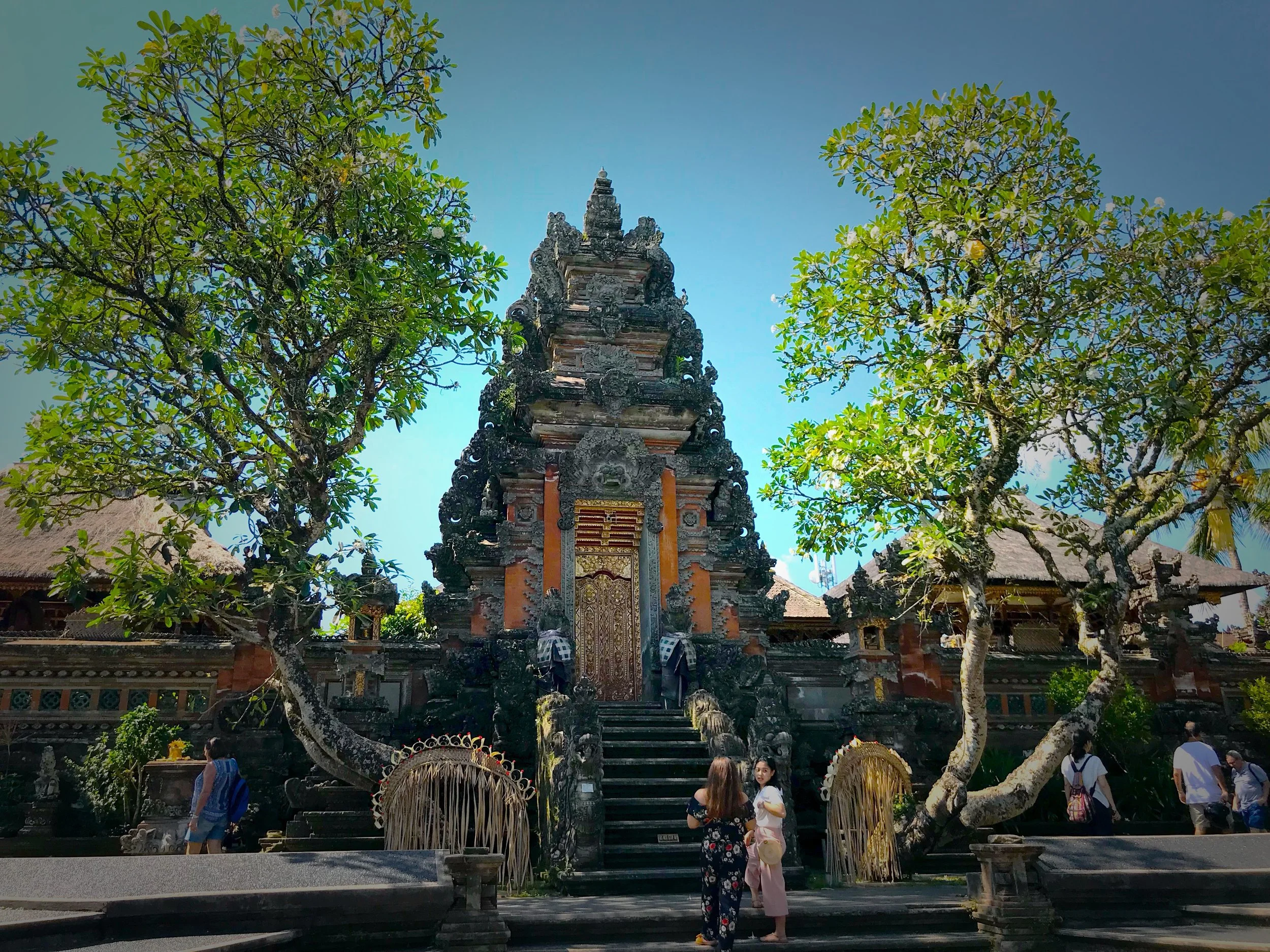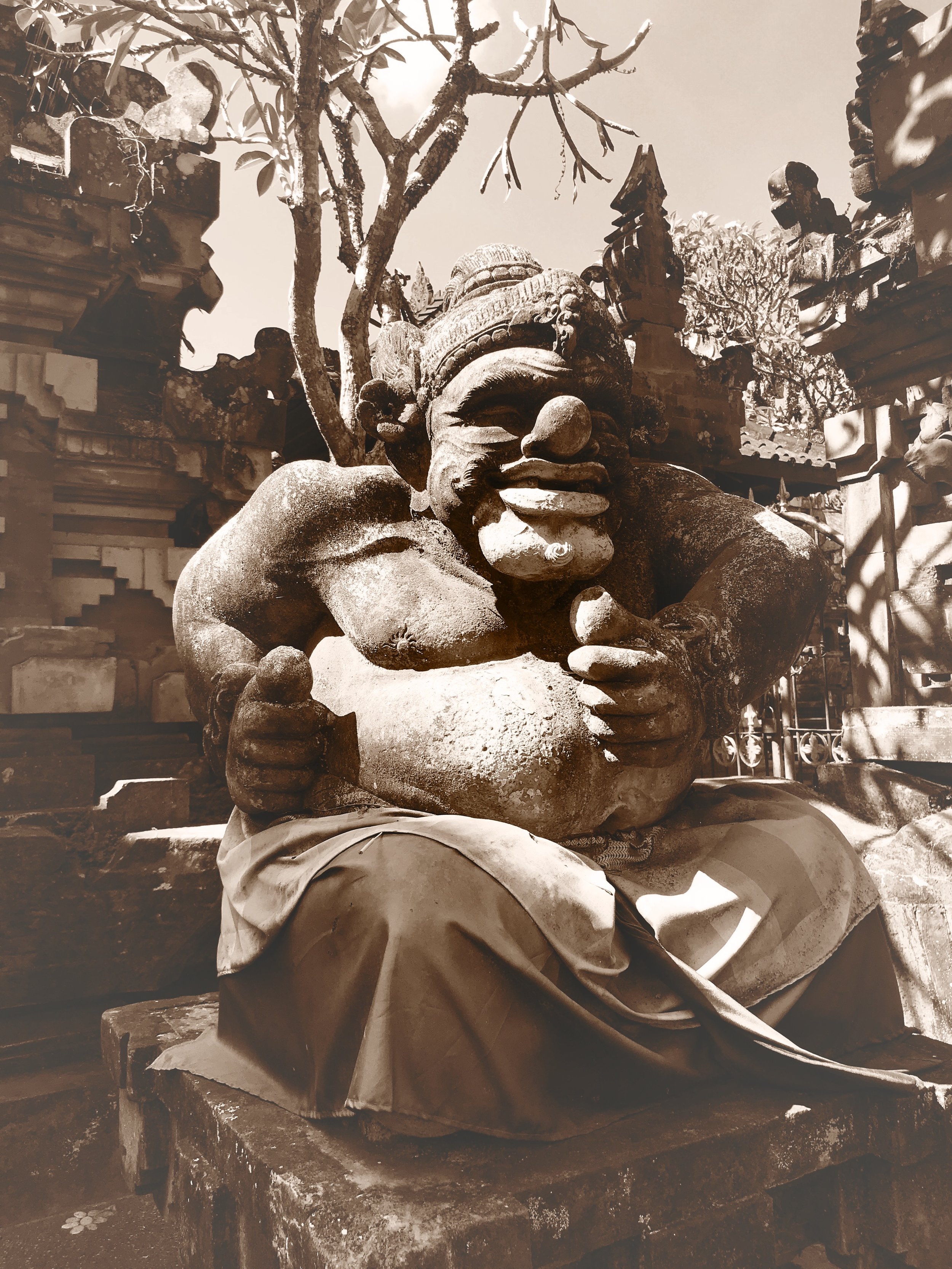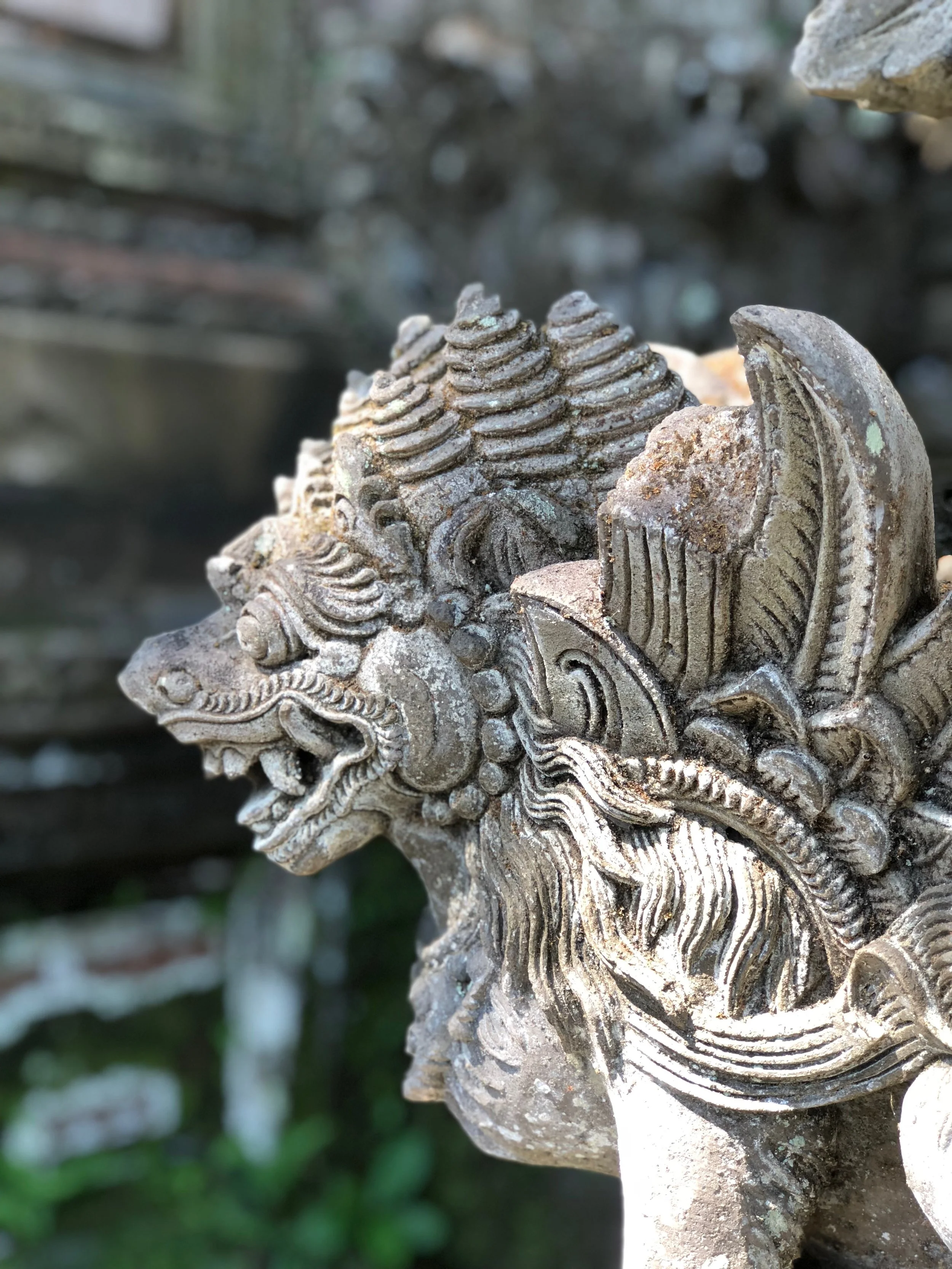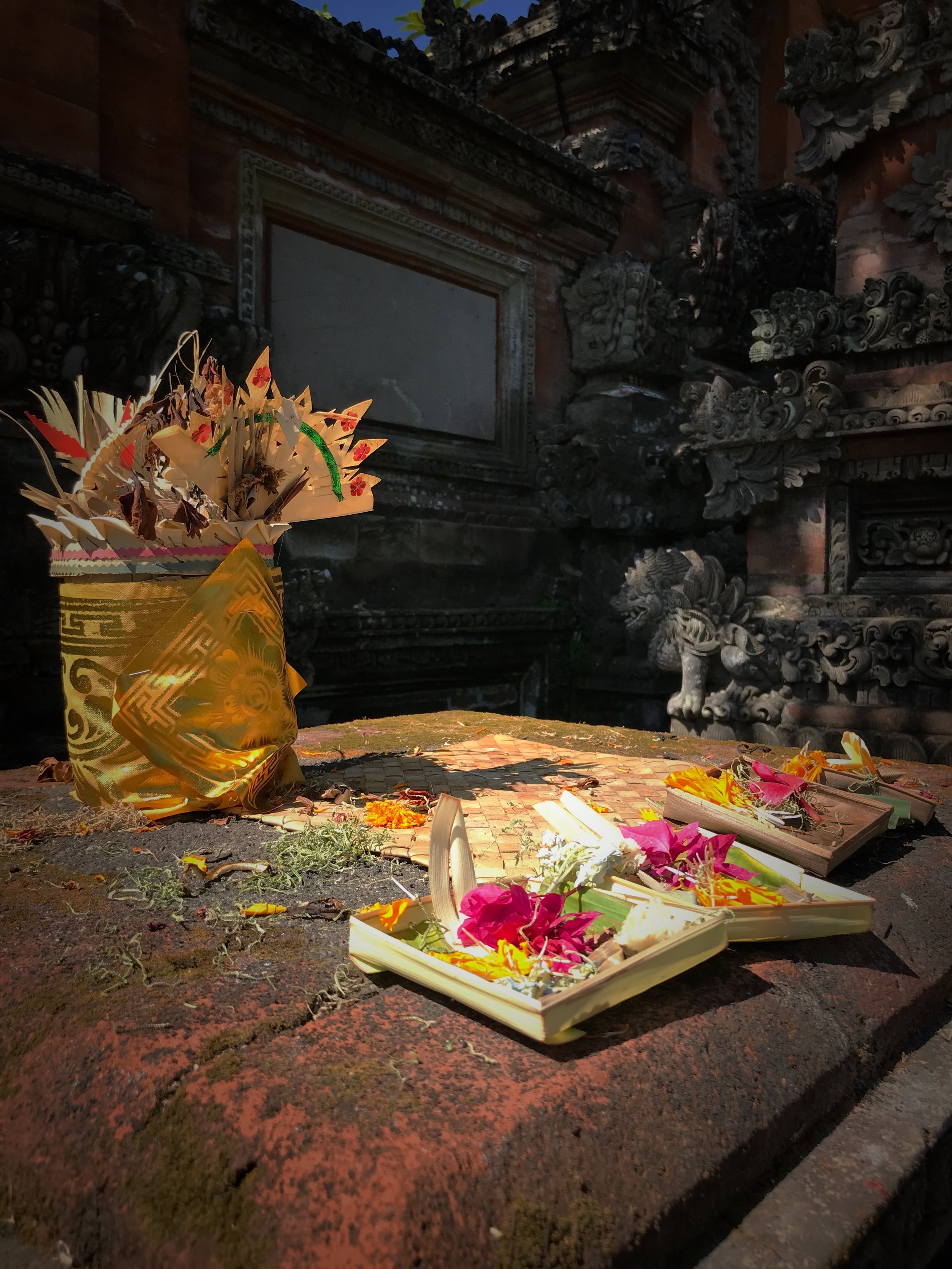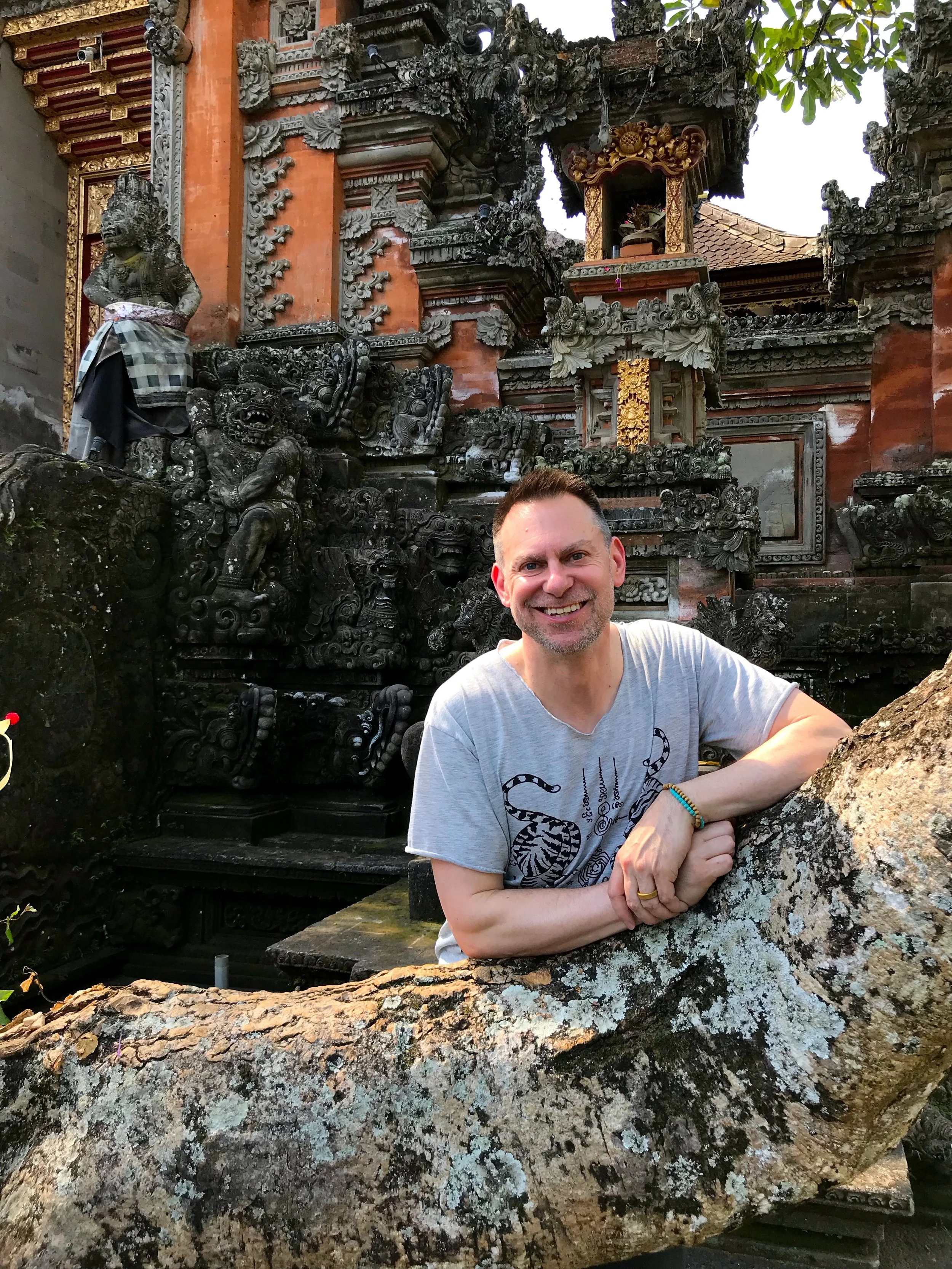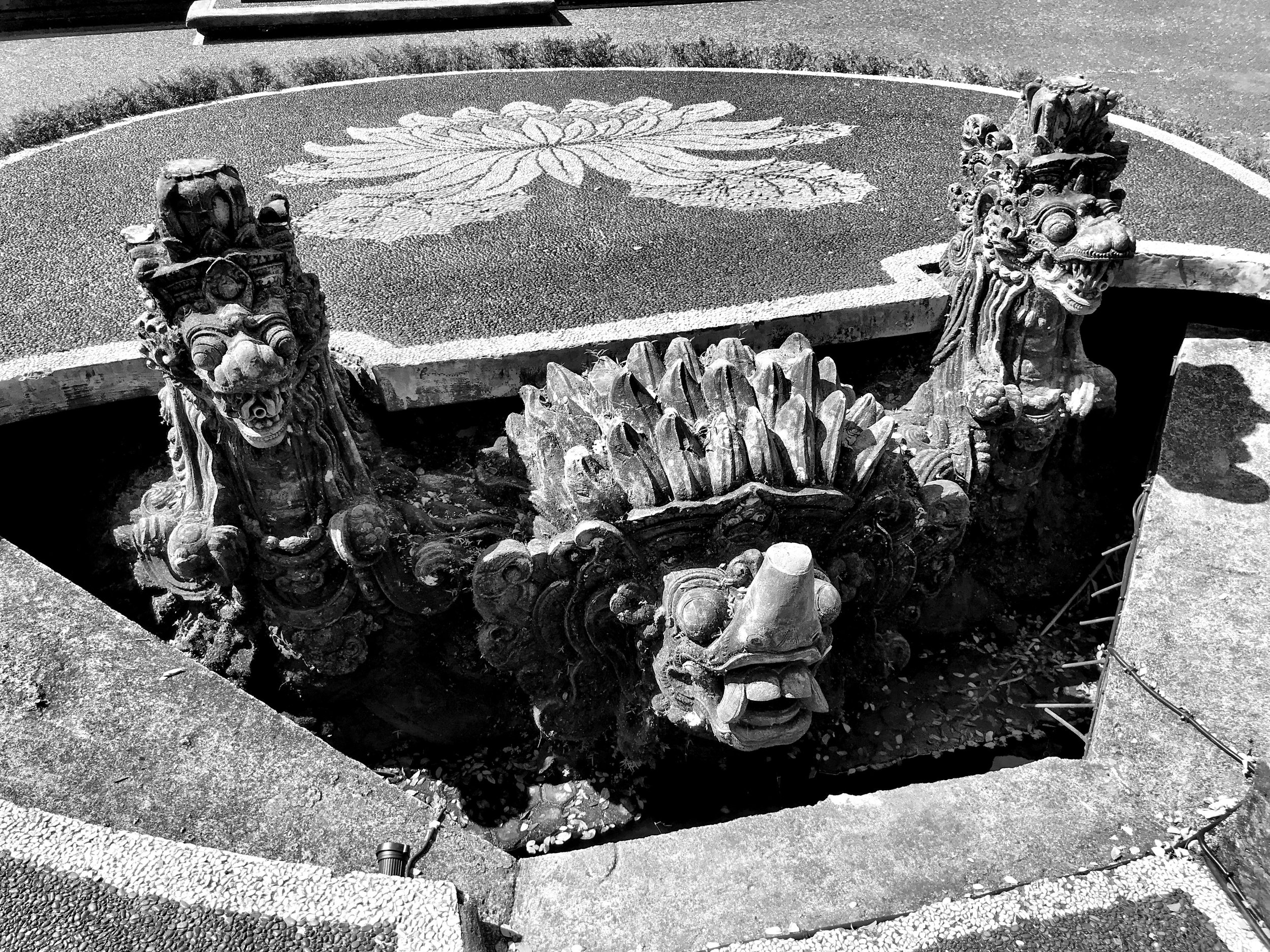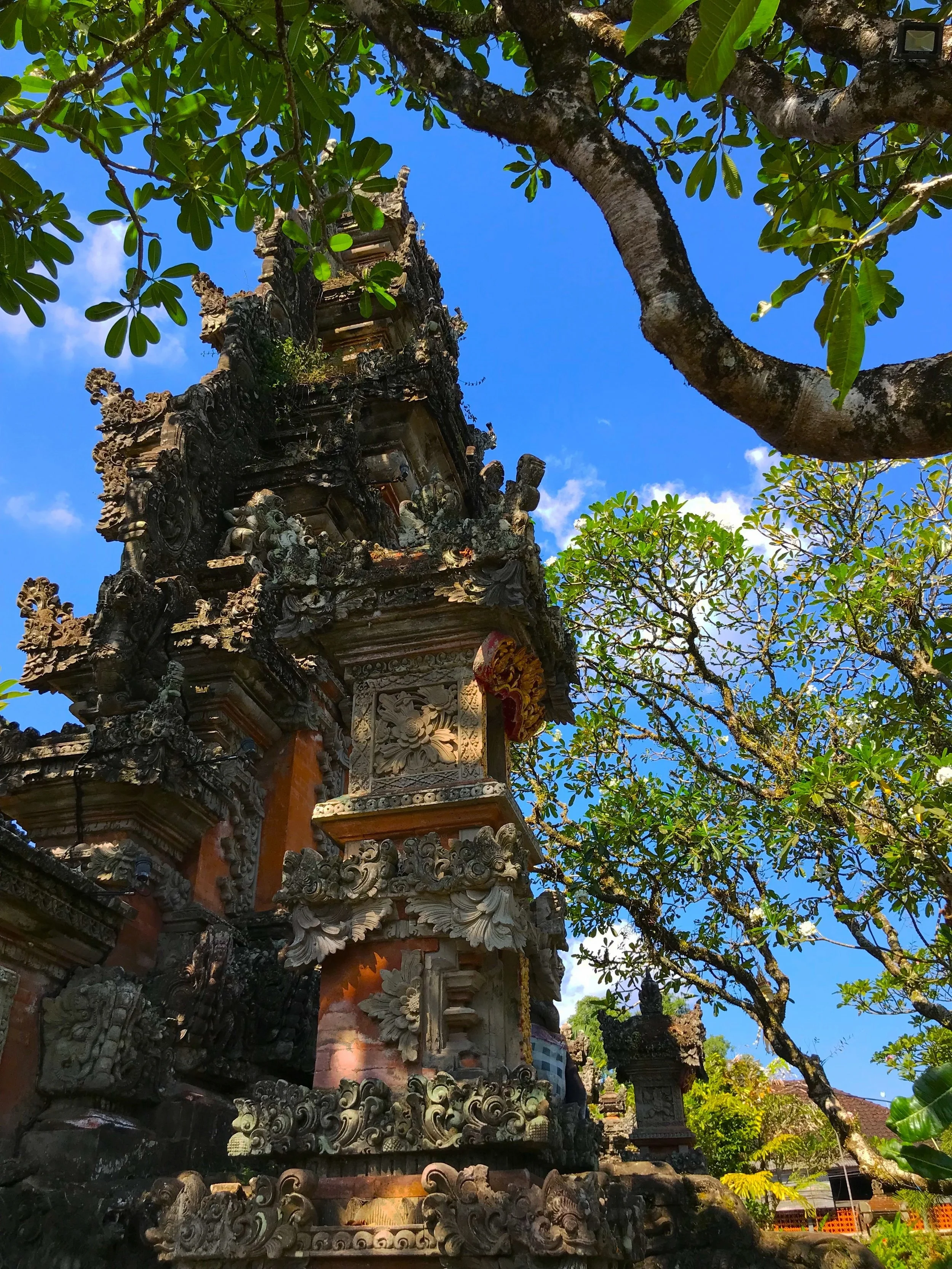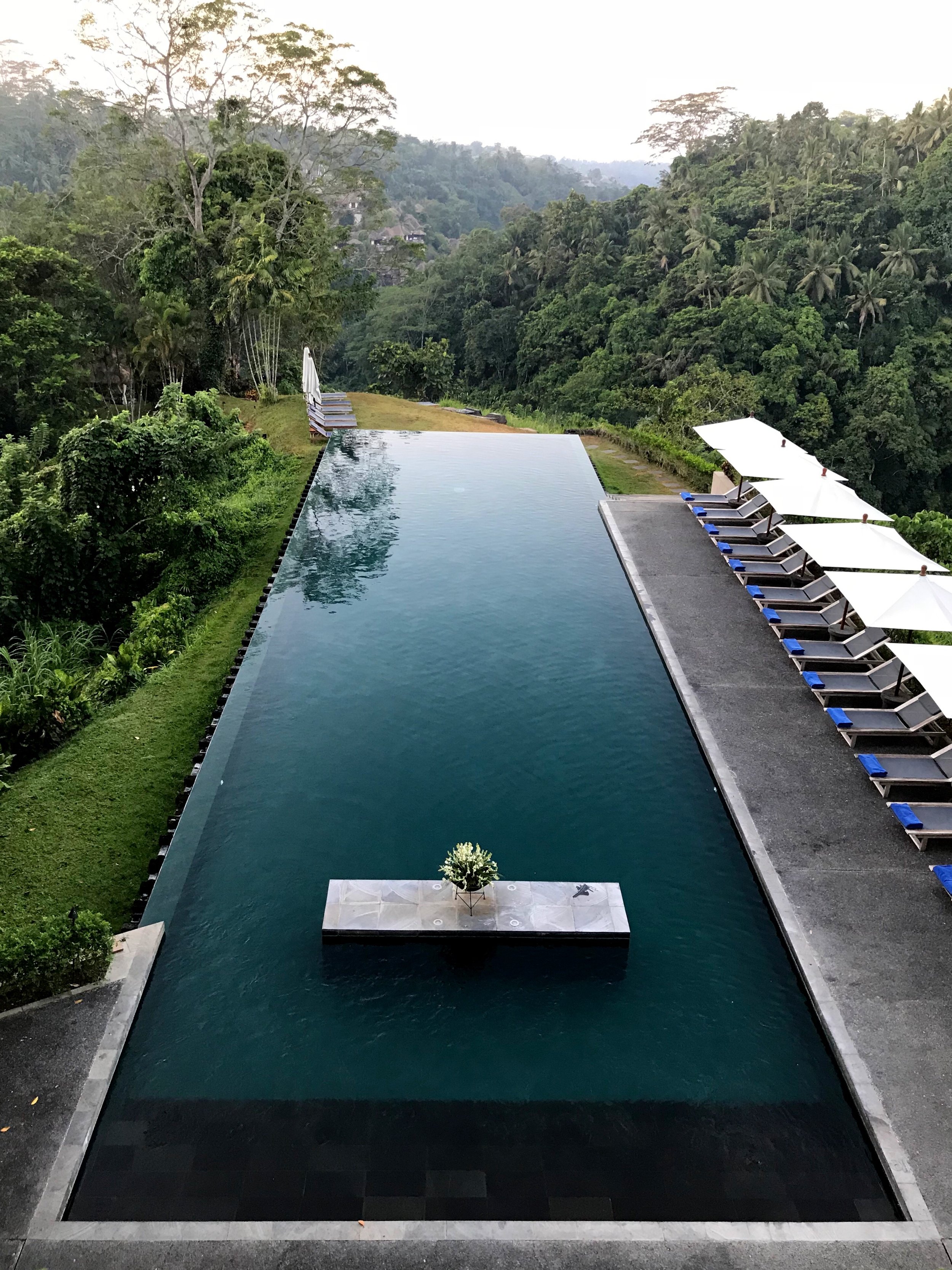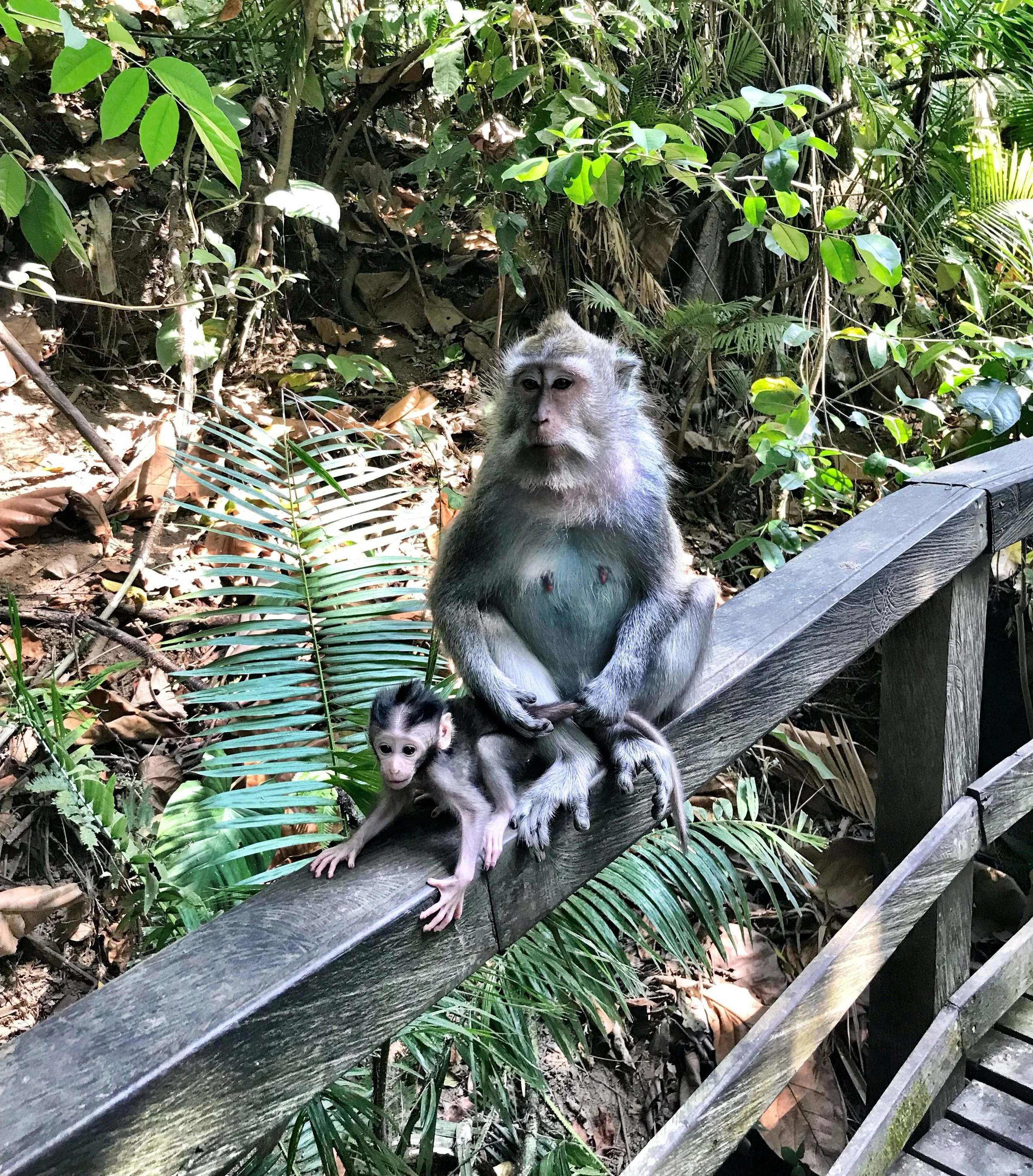You can’t miss the Saraswati Temple, famous for its lotus pond and dedicated to the Hindu goddess of learning.
The Saraswati Temple is a peaceful oasis in Ubud
On our first afternoon exploring Ubud, Wally and I decided to grab a bite at Cafe Lotus. Our table within the café’s open-air dining pavilion had a lovely view of the pond in front of the temple. There’s an undeniably magical quality to the multitudes of vibrant pink buds rising upon their stems above the murky waters, with the bricks of the temple beyond glowing orange.
Grab a bite at Cafe Lotus and admire the view
The temple is dedicated to Saraswati, who, according to Hindu mythology, is the divine consort of Brahma, the four-faced creator deity. Her name is a combination of two Sanskrit words, “sara,” a lake or pool, and “vati,” to possess. Loosely translated, her name means She Who Has an Abundance of Water. Originally, she took the form of the sacred Saraswati River in India. That river has since dried up, and over time, she transformed to become the patroness of knowledge, literature and the arts, the creative essence flowing within the human heart and soul.
This pathway bisects the lotus pond and leads to the temple
Who doesn’t love a lotus?
It is believed that Saraswati lives on the tip of the tongue and is present whenever words are spoken. She is the goddess of speech, and her blessings are invoked through the mantras written on sacred traditional palm leaf manuscripts, known as lontar. She is often depicted with four arms, seated upon a swan or lotus flower. In her hands she holds a lute, prayer beads and a lontar, representing the intellect, alertness and ego.
The temple is dedicated to the Hindu goddess Saraswati, patroness of learning and the arts
Pura Taman Saraswati
Prince Tjokorda Gede Agung Sukawati commissioned the temple, which was designed by the Balinese artist Gusti Nyoman Lempad. Construction began in 1951 and was completed the following year. Under patronage of the royal family, Lempad played an important role in the design and construction of palaces and temples throughout Ubud and its neighboring villages. When Lempad died in 1978, he was believed to have been 116 years old.
Wally and Duke in front of the temple and pond
There’s a Starbucks right in front of the temple. Grab a venti iced latte on the way out!
The temple is easy to find, sandwiched between Cafe Lotus and a Starbucks off the main thoroughfare of Ubud. To enter the grounds, cross a footbridge that bisects the scenic lotus ponds. The path is flanked by theatrical and grotesque sculptures of Hindu mythological figures, many of which are the original works of Lempad himself.
Grotesque statues like this one are characteristic of Gusti Nyoman Lempad’s style
Lempad carved many of the statues and was the architect of the temple
Wally and I were only able to explore the front platform of Pura Taman Saraswati, as the inner courtyard was closed to visitors. The temple exterior is a traditional assemblage of orange-red bricks embellished with gray volcanic stone ornamentation. A towering central gate known as a paduraksa stands at its center. A pair of intricately carved wooden doors functions as a symbolic boundary marker between the outer world and the temple’s sacred interior.
The central gate into the sacred interior of the temple was locked every time we visited
Gold detailing on the temple doors features heads of guardian spirits
On either side of the main gate at Pura Taman Saraswati are two tall frangipani trees whose gnarled branches and dark green leaves grow outwards and upwards like a pair of wings. When in bloom, these trees produce small, fragrant white flowers with yolk-yellow centers. The flowers are called jepun in Bali and are commonly used in the daily devotional offerings to the gods known as canang sari.
People leave offerings of flowers for Saraswati
As Saraswati is associated with the arts, it’s fitting that the courtyard serves as an open-air stage for nightly kecak performances, traditional stories depicting the constant struggle between good and evil, told through dance.
W is for Wally
Duke branches out at Pura Taman Saraswati
On a platform in front of the temple, a spiny-backed turtle flanked by two dragon-looking creatures emerge from below
On the couple of occasions we visited, we entered directly from Jalan Raya, the main street that runs through the center of Ubud. The water temple is apparently also accessible from Jalan Kajeng, which runs perpendicular to Jalan Raya. No matter how you arrive there, it’s a peaceful oasis amid the throngs of tourists and worthy of a quick visit. –Duke
The Saraswati Temple in Ubud
Pura Taman Saraswati
Jalan Kajeng
Ubud
Kabupaten Gianyar
Bali 80571
Indonesia





